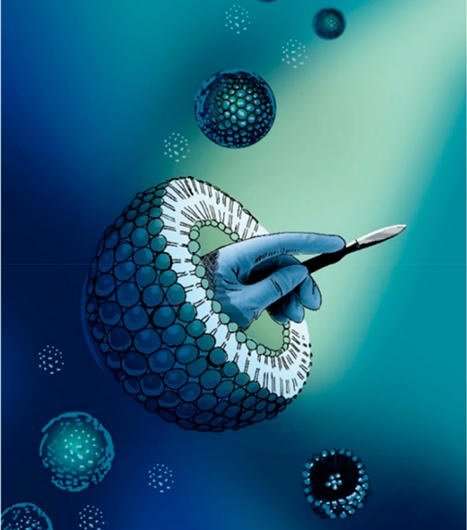February 15, 2018 feature
Nanoparticles act as surgical blades for improved dental surgery

Currently, more than 80 nanotechnologies have been approved for a variety of medical applications, from treating cancer to bioimaging to tissue remodeling.
Now in a new study, researchers have shown that enzyme-containing nanoparticles can perform minor dental surgery and improve the outcome of dental braces for reorienting severely misaligned teeth into their proper position. Tests showed that rats treated with the nanoparticles before wearing braces exhibited better tooth alignment, reduced tooth relapse, faster recovery, and less pain compared to rats that underwent traditional surgery before braces.
The researchers, led by Avi Schroeder at Technion-Israel Institue of Technology, have published a paper on the new nanotechnology in a recent issue of ACS Nano.
"I think we are trying to change a 5000-year dogma of the way surgeries are performed," Schroeder told Phys.org. "Specifically, the existing scalpel cannot distinguish between healthy and diseased tissue. However, enzymes can. Proteolytic enzymes are tuned to degrade specific tissues, without harming other healthy tissues. We believe that in the future surgeries must be more accurate, with less damage to healthy tissues."
The researchers designed the new procedure specifically to address cases of severe misalignment of teeth, termed "malocclusion." Currently, this condition is treated with minor yet often painful surgery to cut the collagen fibers that connect the teeth to the bone, followed by braces to move the teeth into their proper position. Besides a painful recovery period, about 40% of patients experience relapse and require a second cycle of treatment.
The nanotechnology treatment has the potential to greatly improve this treatment procedure by allowing the body's own natural enzymes to break down the collagen fibers and for other natural biomolecules to rebuild the fibers when the teeth are correctly aligned with braces.
To do this, the researchers engineered nanoparticles consisting of a liposome vesicle (basically an empty cell membrane) filled with the enzyme collagenase. Collagenase causes collagen fibers to weaken and break, but only when first activated by calcium, which occurs naturally in the mouth. In order to ensure that the collagenase only begins working at the surgical site, the liposome acts as a protective vehicle to safely transport the collagenase to the sulcus (located between the gums and teeth), where it begins diffusing out and interacting with calcium.
The researchers determined the particular collagenase concentration that causes the collagenase to weaken the collagen fibers by approximately 50%, making it much easier for braces to reorient the teeth. Over the next several hours, the body's own fibroblasts sense the weakened collagen and initiate collagen remodeling, restoring the fibers to their original strength.
Overall, tests with rats showed that those treated with the nanosurgical procedure experienced a three-fold enhancement in tooth alignment, along with significantly less tooth relapse and less pain compared to rats treated with traditional surgery. The researchers attribute the improvement to the fact that the nanosurgical procedure allows the tissue and bone to be remodeled at the new orientation, in contrast to stressed teeth returning to their original position as often occurs in the traditional procedure. The results suggest that the nanosurgical procedure has the potential to replace the more invasive traditional method with an overall improved outcome.
"Here we demonstrated the bio-surgery approach for the first time," Schroeder said. "We plan to expand to other organs and more challenging procedures in the future."
More information: Assaf Zinger et al. "Proteolytic Nanoparticles Replace a Surgical Blade by Controllably Remodeling the Oral Connective Tissue." ACS Nano. DOI: 10.1021/acsnano.7b07983
Journal information: ACS Nano
© 2018 Phys.org



















